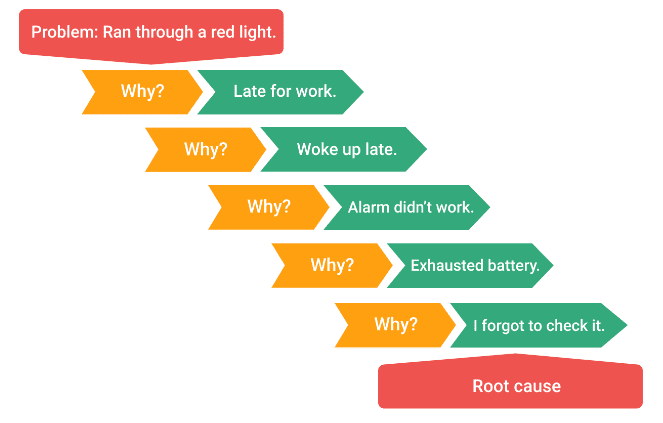The 5 WHY questions

Recent Blogs
Leading in the Grey
Why Project Teams should start with curiosity, not connection
Unlearning is the leadership skill nobody talks about
Conflict handled well is a doorway to trust
Life keeps teaching until we listen
When values clash: conflict or opportunity?
Before the Plan, comes the Pause
The First Five Minutes: what your project team vibe reveals
Butterflies before bravery: why leaders overthink tough conversations
Are projects answering the correct why response?
Let’s deviate slightly to understand what triggered my question. This week I picked up my granddaughter from daycare and told her we were not going straight home; we were going to call into the shops to get a few things. “Why Nanny”. There is no eggs or milk in the fridge. “Why Nanny”. I used them making scrambled eggs for breakfast. “Why Nanny”…and we continued the question/response pattern all the way to the shops.
Have you heard of “the 5 whys” method as part of the Toyota Production System, which was developed by Sakichi Toyoda, a Japanese inventor and industrialist.
I believe it supports decision making in why invest or not invest in a project.
The 5 Whys are more than likely to show you the source of the problem is not what you expected. Often, issues that are considered a technology problem actually end up being a people and/or process problem.
Here is a sample why question response.

Source: kanbanize.com
Imagine the team looking at this problem, jumped to a technology solution to fix the alarm that didn’t work when a fix to the process like adding a checklist item “check the alarm battery” could have solved the problem.
I can hear you thinking a technology solution would have been a waste of time and money. There are bigger problems to fix.
How to get started with 5 Whys
Step 1 Form a team
Bring together a cross-functional team, who can provide different points of view.
Step 2 Define the problem
Document a clear problem statement to define the scope of the issue and keep focus.
Step 3 Ask why
Have someone facilitate the process.
Ask questions based on data rather than emotional opinions.
Sometimes a why question can have more than one response, track each as a separate branch.
Step 4 Take action
Confirm the root cause and recommend the solution.
Usually there are two action options to implement the solution:
- strategic change will require a business case to seek additional funding and establish a project; or
- operational change will happen as part of a continuous improvement process.
Here are problems from project executives who I have supported to make a strategic decision and take action to either invest or not invest in a project.
- Customers are complaining about the call centre wait times.
- Consulting projects are not being delivered on time or bringing in the expected revenue.
- Warehouse stock is not available for urgent asset repairs.
What strategic decision and action process do you have in place that answers the WHY questions?
